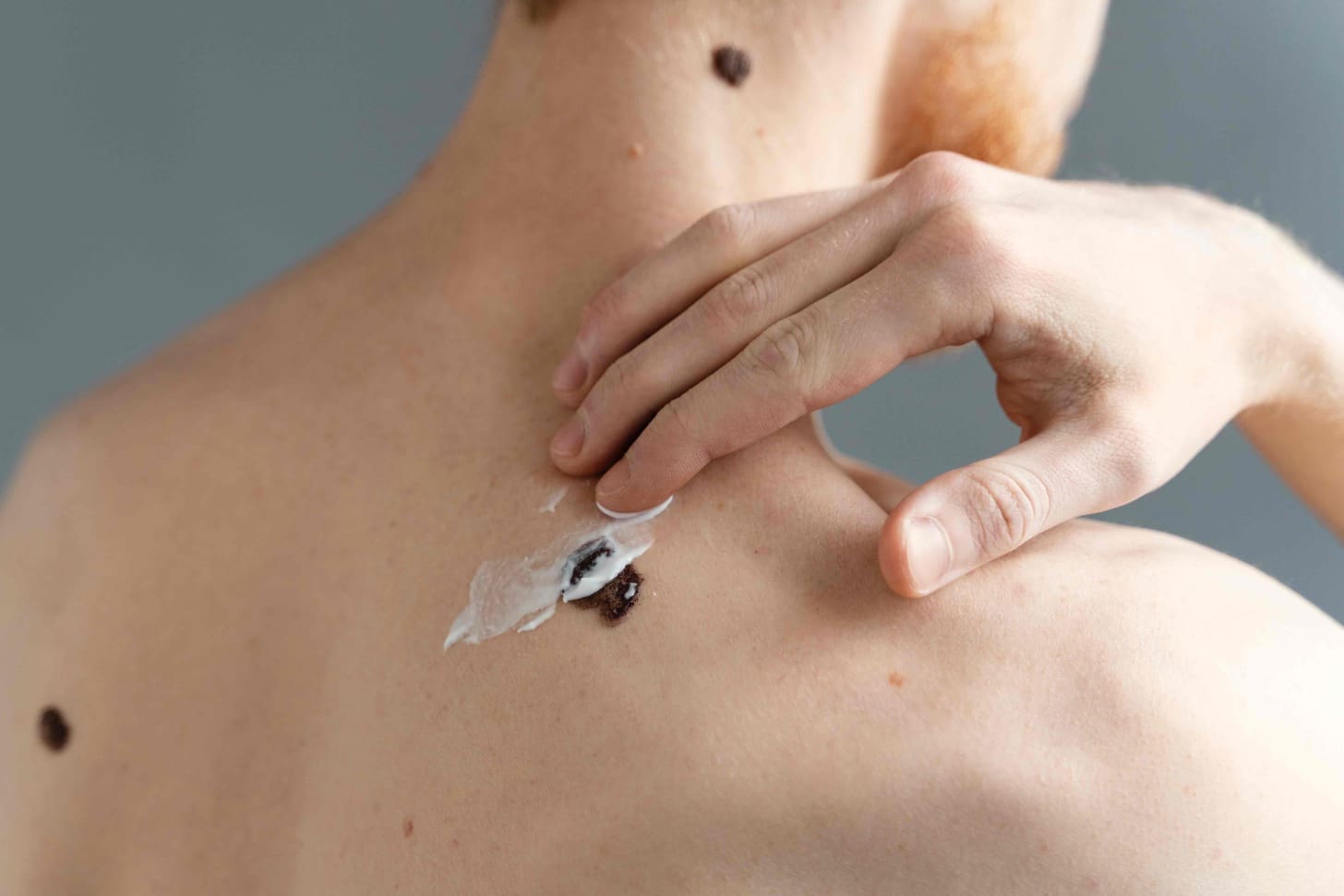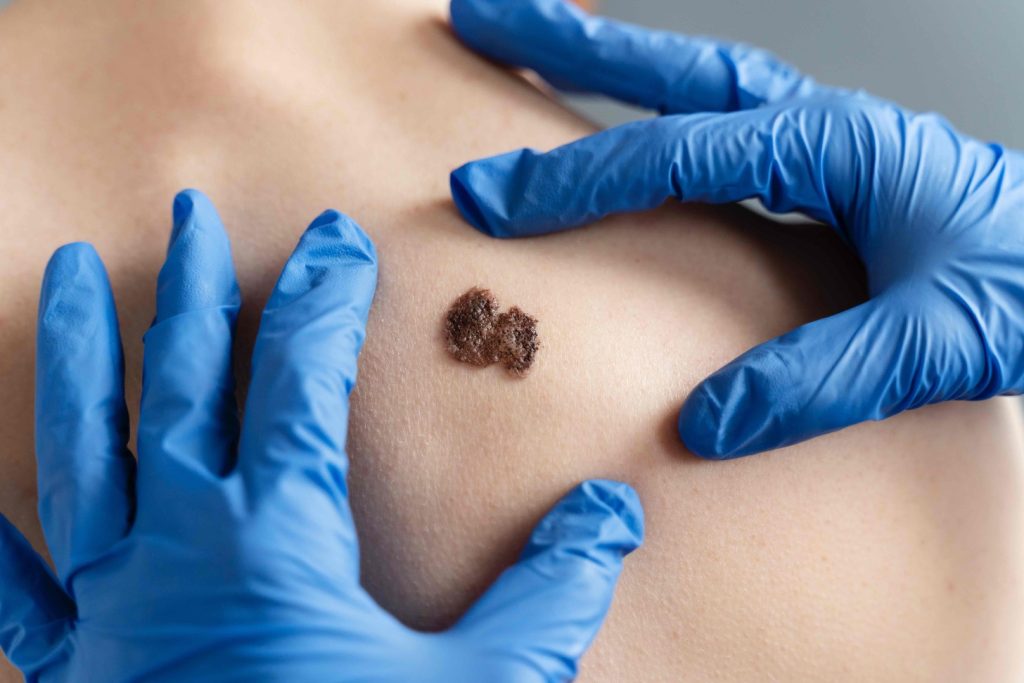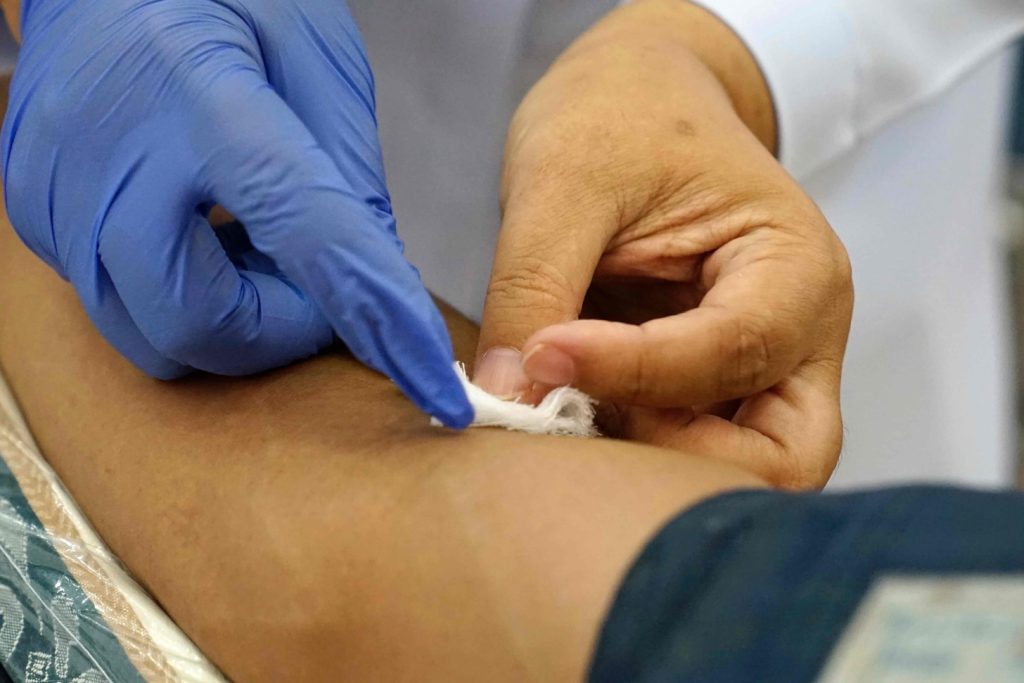Last Updated on October 21, 2025 by mcelik

At Liv Hospital, we specialize in the surgical removal of basal cell carcinoma. This is a common skin cancer. It can be treated well with high cure rates and little tissue loss, even in sensitive areas like the face.
We will show you how to do basal cell excision. This is a surgery to remove the tumor and some healthy tissue around it. This helps prevent it from coming back. Knowing about the procedure and what to expect helps patients get ready for surgery and recovery.

Basal cell carcinoma is the most common skin cancer. It’s important to know about it to treat it well. We need to understand its characteristics, how common it is, and how it looks to manage it effectively.
Basal cell carcinoma (BCC) starts in the skin’s basal cell layer. It grows slowly and can damage the skin around it. BCC is not usually deadly but can harm the skin a lot if not treated. It looks like a shiny bump or nodule, often on sun-exposed areas.
BCC makes up about 80% of all skin cancer cases. In the U.S., over 4 million people get BCC every year. This shows how important it is to know about skin cancer and how to prevent it.
“Basal cell carcinoma is the most common cancer in humans, and its incidence is increasing worldwide.”
BCC often shows up on sun-exposed parts like the face, ears, neck, and scalp. It can also appear in other places, but less often. It can look different, like:
Knowing where and how BCC looks is key for catching it early and treating it right.

Removing basal cell carcinoma needs careful planning. A detailed pre-surgical assessment is key. It helps us figure out how big the tumor is and how to remove it.
We start by looking at a patient’s medical history and risk factors. We check for past skin cancers, UV radiation exposure, and family history. Knowing these helps us create a treatment plan that fits the patient.
A detailed clinical exam is vital. We use dermoscopy to see more clearly. Dermoscopy lets us spot things we can’t see normally, helping us plan better.
We confirm the diagnosis with a biopsy before surgery. A biopsy takes a small tissue sample for examination. This step is key to making sure it’s basal cell carcinoma and planning the surgery.
Choosing the right surgical margins is important. We look at the tumor’s size, location, and type. We aim to remove the tumor fully without losing too much healthy tissue.
Surgical excision is a common treatment for basal cell carcinoma. It has a high success rate when done right. The procedure removes the tumor and some healthy tissue around it. This ensures all cancer cells are gone. We’ll look at how it works, when to use it, and what to expect.
The process involves removing the tumor and some healthy skin around it. This approach helps ensure all cancer cells are removed. It lowers the risk of the cancer coming back.
Doctors choose surgical excision based on the tumor’s size, location, and depth. They also consider the patient’s health. It’s best for big tumors, those that keep coming back, or in areas that matter a lot for looks.
The results of basal cell excision are usually good. Success rates can be as high as 95% or more for first-time cases. This shows it’s a very effective treatment.
Even though it’s effective, there are times when surgical excision isn’t the best choice. This includes patients with serious health issues or tumors in places where surgery could harm looks or function.
| Criteria | Surgical Excision | Other Treatments |
|---|---|---|
| Cure Rate | Up to 95% | Varies (50-90%) |
| Tumor Size and Location | Suitable for large or cosmetically sensitive areas | May not be suitable for large tumors |
| Patient Health | Requires overall good health | Can be used in patients with comorbidities |
To do a basal cell excision right, we need special tools and stuff. It’s key to have everything ready before we start. This makes sure the patient is safe and the procedure goes well.
The right tools are key for a good basal cell excision. Surgical scalpels help us make clean cuts. Forceps are for moving tissue around.
We also need scissors for cutting and retractors to see what we’re doing. These tools help us do the job right.
Using local anesthesia is important to keep the patient comfy. We use local anesthetic agents like lidocaine. We also need syringes and needles of the right size.
Having epinephrine ready is also key. It helps stop bleeding.
After we remove the tumor, we have to handle the sample right. We use specimen containers with fixatives like formalin. This keeps the tissue good for tests.
We might use sutures or markers to help the pathologist know which way is up.
After we take out the tumor, we need to close the wound right. We use sutures, both kinds, and surgical staples when needed. We also need dressing materials like gauze and bandages for after.
Having all the right stuff helps us do basal cell excision safely and well. This means better results for our patients.
Before we start basal cell excision, we focus on safety and comfort. Getting ready and using the right anesthesia are key. We make sure our patients are well-informed and feel at ease.
Getting informed consent is a big step before basal cell excision. We explain the procedure, its benefits, and risks clearly. This includes talking about the diagnosis, how the surgery will be done, what to expect, and other treatment options.
This way, our patients can make smart choices about their health.
How the patient is positioned is very important. It affects the success of the surgery and how comfortable they feel. We adjust the table or use supports to get the best access and comfort.
We use local anesthesia to reduce pain during basal cell excision. We choose from different methods like infiltration or nerve blocks, based on the tumor’s location and size. The goal is to meet each patient’s needs and the surgery’s specifics.
Keeping an eye on the patient’s vital signs is essential. We watch heart rate, blood pressure, and oxygen levels closely. This helps us act fast if there’s a change and keep the patient safe and comfortable.
Basal cell excision is a precise process. It requires careful attention to several key factors. The goal is to remove the tumor effectively while protecting the surrounding tissue.
The first step is to mark the surgical margins around the tumor. This step is vital for guiding the incision. It ensures the tumor is removed with enough clearance. We use a surgical marker to outline the margins, considering the tumor’s size and location.
The incision techniques used aim to minimize tissue damage. We make a precise incision along the marked margins. Depending on the procedure, we use a scalpel or surgical scissors.
After making the incision, we start the tumor excision process. We carefully dissect out the tumor, staying within the marked margins. The excised tumor is then examined to confirm the excision’s completeness.
Effective hemostasis management is key to prevent bleeding. We use electrocautery or hemostatic agents as needed. This ensures a clear surgical site and prevents complications.
| Step | Description | Key Considerations |
|---|---|---|
| Marking Surgical Margins | Outlining the margins around the tumor | Tumor size, location, and histological type |
| Incision Techniques | Making a precise incision along the marked margins | Minimizing tissue damage, promoting healing |
| Tumor Excision Process | Dissecting out the tumor within the marked margins | Ensuring complete removal, histopathological examination |
| Hemostasis Management | Controlling bleeding during and after the procedure | Using electrocautery or hemostatic agents as needed |
Wound closure and reconstruction are key steps in treating basal cell carcinoma. They affect both how well the area works and how it looks. The right method depends on the wound’s size, where it is, and the patient’s health and wishes.
For small wounds, primary closure is often the best choice. It leads to less scarring. Simple interrupted sutures or continuous sutures are common. The choice depends on the wound and the surgeon’s style.
For bigger wounds or those under stress, extra steps like undermining or relaxing incisions might be needed. They help close the wound without too much tension.
When primary closure isn’t possible, flaps or grafts are used. Local flaps move tissue from nearby, while skin grafts come from elsewhere. The choice depends on the wound’s size, location, and the skin’s condition.
| Reconstruction Method | Advantages | Disadvantages |
|---|---|---|
| Primary Closure | Simple, quick, minimal additional scarring | Limited to small defects, may be under tension |
| Local Flap | Provides good color and texture match, can cover large defects | Requires additional surgical skill, may have donor site morbidity |
| Skin Graft | Can cover large areas, versatile | May have poor color and texture match, requires donor site |
Facial procedures need special care because of the importance of looks. Techniques like local flaps and skin grafts are used. They aim to hide scars and improve looks.
Getting the best cosmetic results means careful planning and doing. Choosing the right closure method and keeping tension low is key. Closing the wound in layers also helps avoid problems.
Aftercare is also vital for good looks. Patients need to know how to care for their wound. Follow-up visits help check healing and address any issues.
The place where basal cell carcinoma is found greatly affects how it’s treated. The spot of the tumor changes the method used and the goals for looks and function.
The face is a common spot for basal cell carcinoma. Removing it needs careful planning to keep the face looking good. We must think about the skin’s natural lines, how close it is to important parts, and the risk of scars.
Key considerations for facial basal cell carcinoma removal include:
Basal cell carcinoma on the trunk and limbs has its own set of challenges. While looks are important, the main goal is to remove the tumor completely.
Factors to consider for trunk and extremities include:
Some areas of the body are at higher risk because of their closeness to important structures or their tendency to come back. These spots need very careful surgery and extra steps.
Here’s a comparison of considerations for different anatomical sites:
| Anatomical Site | Key Considerations | Surgical Challenges |
|---|---|---|
| Face | Cosmetic appearance, vital structures | Preserving symmetry, minimizing scarring |
| Trunk and Extremities | Tumor size and depth, skin tension | Wound closure, possible complications |
| High-Risk Zones | Proximity to critical structures, recurrence risk | Meticulous technique, extra precautions |
It’s important to know the difference between basal and squamous cell carcinoma. This helps decide how deep to cut and how wide the margins should be. Both are skin cancers, but they need different treatments.
Squamous cell carcinoma needs a deeper cut than basal cell carcinoma. This is because it can grow deeper into the skin. Making sure to remove all cancer cells is key.
The margins for basal and squamous cell carcinoma are different. Squamous cell carcinoma usually needs wider margins. This is because it’s more likely to spread.
When checking the risk of both cancers, doctors look at the tumor’s size, where it is, and its type. Good management helps lower the chance of the cancer coming back or spreading.
Looking at the tissue under a microscope is important. It confirms the cancer type and checks if all cancer was removed. For squamous cell carcinoma, this can show if there’s a higher risk of it coming back.
To understand the differences in excision, here’s a comparison:
| Characteristics | Basal Cell Carcinoma | Squamous Cell Carcinoma |
|---|---|---|
| Excision Depth | Generally shallower | Often deeper due to possible invasion |
| Margin Requirements | Narrower margins usually enough | Wider margins are recommended |
| Risk of Metastasis | Low | Higher than BCC |
Knowing how to treat basal and squamous cell carcinoma is key for good treatment. By understanding each type’s unique needs, doctors can improve surgical results.
There are many ways to remove skin cancer, not just surgery. Each method has its own benefits and when to use it.
Mohs micrographic surgery is very precise. It checks the tumor’s edges during the surgery. This helps remove cancer without harming healthy skin. It’s great for areas that are important for looks or function.
Key benefits of Mohs surgery include:
Curettage and electrodesiccation is another way to remove skin cancer. It uses a curette to scrape away the tumor and then kills any left-over cancer cells with an electric current. It’s good for small, surface-level basal cell carcinomas.
Considerations for curettage and electrodesiccation include:
Cryosurgery freezes cancer cells to death. Laser therapy uses light to destroy them. Both are less invasive than surgery and work for some skin cancers.
Advantages of cryosurgery and laser therapy:
Choosing how to remove skin cancer depends on the tumor’s type, size, and where it is. Also, the patient’s health matters. Alternatives might be better if surgery is not ideal or if the patient can’t handle a big surgery.
Talking to a doctor is the best way to figure out the right treatment for you.
After basal cell excision, it’s key to follow proper care for healing. This period is vital for treatment success.
We give patients clear instructions right after the surgery. They need to keep the area clean, avoid hard work, and manage pain well. Following these steps is important to avoid infection and help healing.
Good wound care is essential for healing. We suggest gentle cleaning with mild soap and water. Then, apply antibiotic ointment to prevent infection. Regular dressing changes are also key to watch healing and spot any problems early.
Complications are rare but can happen after basal cell excision. We teach patients to watch for signs like more redness, swelling, or discharge. Spotting and handling these issues early is vital to avoid lasting harm. If patients see any worrying signs, they should reach out to us right away.
Following up is a big part of care, letting us check on healing and solve any problems. We usually see patients a week after surgery and then as needed. Long-term checks are also important to catch any basal cell carcinoma or skin issues that come back.
By sticking to these guidelines and talking openly with our team, patients can get the best results after basal cell excision. Our dedication to care goes beyond the surgery, helping patients through recovery and beyond.
Managing basal cell carcinoma well is key to stopping it from getting worse and to get the best results for patients. Basal cell excision is a top choice for treatment. It has a high success rate when done right.
We’ve covered the main steps in basal cell excision, from before surgery to aftercare. Knowing these steps helps patients get ready for treatment. It also helps doctors give the best care possible.
Basal cell excision is a big deal in treating skin cancer. As we keep improving in treating skin cancer, basal cell excision stays a mainstay in handling basal cell carcinoma.
Basal cell carcinoma is a type of skin cancer. It starts in the basal cell layer of the skin. It’s usually treated by removing the tumor and some healthy tissue around it.
The cut for squamous cell carcinoma varies. It depends on the tumor’s size, location, and depth. Squamous cell carcinoma often needs a deeper cut because it can grow deeper.
There are several ways to remove skin cancer. These include surgical excision, Mohs micrographic surgery, curettage and electrodesiccation, and cryosurgery. The right method depends on the tumor’s type, size, and location.
Basal cell carcinoma on the face is usually removed surgically. The goal is to keep the face looking good. The surgeon might use different methods to close the wound.
Basal and squamous cell carcinomas need different approaches. Squamous cell carcinoma often needs a deeper cut because it can grow deeper. Basal cell carcinoma is usually treated with less aggressive margins.
Mohs micrographic surgery is a detailed method. It checks the tumor’s edges during the surgery. It’s used for high-risk or complex skin cancers, or where saving tissue is important.
After basal cell excision, follow your doctor’s instructions. This includes wound care and watching for any problems. Early treatment of complications is key to avoiding long-term issues.
Basal cell excision usually has good results. Success rates vary based on the tumor’s size, location, and depth, and the patient’s health.
Preparing for basal cell excision surgery involves getting informed consent and positioning the patient. You’ll also need local anesthesia and to monitor vital signs during the procedure.
Basal cell excision has risks like bleeding, infection, and scarring. It’s important to address these problems early to avoid long-term issues.
Subscribe to our e-newsletter to stay informed about the latest innovations in the world of health and exclusive offers!
WhatsApp us